 According to the first estimate by the Office for National Statistics, the UK economy shrank by 0.3% in the final three months of 2012. This means that over the whole year growth was flat.
According to the first estimate by the Office for National Statistics, the UK economy shrank by 0.3% in the final three months of 2012. This means that over the whole year growth was flat.
The biggest contributor to the fall in GDP in Q4 was the production industries, which include manufacturing. Output of the production sector fell by 1.8% in Q4. Construction sector output, by contrast, was estimated to have increased by 0.3%. Service sector output was flat. The chart below shows quarterly and annual growth in the UK from 2007 to 2012. (Click here for a PowerPoint.)
Latest estimates by the IMF are that the UK economy will grow by 1.0% in 2013 – well below the long-term growth in potential output (see also the last blog, High hopes in the Alps). But some forecasters are predicting that real GDP will continue to fall for at least one more quarter, which means that the economy would then be in a ‘triple-dip recession’.
 Not surprisingly politicians have interpreted the statistics very differently, as have economists. The government, while recognising that the UK faces a ‘very difficult economic situation’, argues that now is not the time to change course and that by continuing with policies to reduce the deficit the economy will be placed on a firmer footing for sustained long-term growth
Not surprisingly politicians have interpreted the statistics very differently, as have economists. The government, while recognising that the UK faces a ‘very difficult economic situation’, argues that now is not the time to change course and that by continuing with policies to reduce the deficit the economy will be placed on a firmer footing for sustained long-term growth
The opposition claims that the latest figures prove that the government’s policies are not working and that continuing attempts to bear down on the deficit are depressing aggregate demand and thereby keeping the economy depressed.
The following webcasts, podcasts and articles expand on these arguments. Try to be dispassionate in using economic analysis and evidence to assess the arguments.
Webcasts and podcasts
 Video Summary: Gross Domestic Product Preliminary Estimate, Q4 2012 Media Briefing (Click here for the following Q&A) ONS (25/1/13)
Video Summary: Gross Domestic Product Preliminary Estimate, Q4 2012 Media Briefing (Click here for the following Q&A) ONS (25/1/13)
 Triple dip on the menu? Channel 4 News, Siobhan Kennedy and Faisal Islam (25/1/13)
Triple dip on the menu? Channel 4 News, Siobhan Kennedy and Faisal Islam (25/1/13)
 Getting and spending – the key to recovery Channel 4 News, Cathy Newman (25/1/13)
Getting and spending – the key to recovery Channel 4 News, Cathy Newman (25/1/13)
 UK economy shrinks by 0.3% in the last three months of 2012 BBC News, Hugh Pym (25/1/13)
UK economy shrinks by 0.3% in the last three months of 2012 BBC News, Hugh Pym (25/1/13)
 Danny Alexander on GDP figures and economic plans BBC Daily Politics (25/1/13)
Danny Alexander on GDP figures and economic plans BBC Daily Politics (25/1/13)
 Osborne defends government’s deficit reduction plan BBC News (25/1/13)
Osborne defends government’s deficit reduction plan BBC News (25/1/13)
 Ed Balls: UK economy urgently needs a ‘Plan B’ BBC News (25/1/13)
Ed Balls: UK economy urgently needs a ‘Plan B’ BBC News (25/1/13)
 UK heads for triple dip as GDP contracts 0.3pc The Telegraph, Philip Aldrick (25/1/13)
UK heads for triple dip as GDP contracts 0.3pc The Telegraph, Philip Aldrick (25/1/13)
 Economist: Government may need to rethink its fiscal policy The Telegraph, Jim O’Neill (25/1/13)
Economist: Government may need to rethink its fiscal policy The Telegraph, Jim O’Neill (25/1/13)
 Has austerity really been tried in Britain? BBC Today Programme, Jonathan Portes and Andrew Lilico (29/1/13)
Has austerity really been tried in Britain? BBC Today Programme, Jonathan Portes and Andrew Lilico (29/1/13)
Articles
UK GDP: Economy shrank at end of 2012 BBC News (25/1/13)
UK GDP shrinks by 0.3% in fourth quarter: what the economists say The Guardian (25/1/13)
New Bank of England head Mark Carney hints at big shift in policy The Guardian (26/1/13)
The Bank of England, the chancellor, and the target BBC News. Stephanie Flanders (29/1/13)
The Entire World Of Economics Is Secretly Thankful To The UK Right Now Business Insider, Joe Weisenthal (26/1/13)
Data
Gross Domestic Product: Preliminary Estimate, Q4 2012 ONS (25/1/13)
 Video Summary: Gross Domestic Product Preliminary Estimate, Q4 2012 ONS (25/1/13)
Video Summary: Gross Domestic Product Preliminary Estimate, Q4 2012 ONS (25/1/13)
Preliminary Estimate of GDP – Time Series Dataset 2012 Q4 ONS (25/1/13)
Business and Consumer Surveys DG ECFIN
Questions
- What are the reasons for the decline in GDP in 2012 Q4??
- Examine how likely it is that the UK will experience a triple-dip recession.
- What measures could be adopted to increase consumer and business confidence?
- If there is substantial spare capacity, is expansionary fiscal policy the best means of achieving economic growth?
- What additional monetary policy measures could be adopted to stimulate economic growth?
- Find out what has happened to the UK’s public-sector deficit and debt over the past three years. Explain what has happened.
 In the wake of the financial crisis of 2007/8, the international banking regulatory body, the Basel Committee on Banking Supervision, sought to ensure that the global banking system would be much safer in future. This would require that banks had (a) sufficient capital; (b) sufficient liquidity to meet the demands of customers.
In the wake of the financial crisis of 2007/8, the international banking regulatory body, the Basel Committee on Banking Supervision, sought to ensure that the global banking system would be much safer in future. This would require that banks had (a) sufficient capital; (b) sufficient liquidity to meet the demands of customers.
The Basel III rules set new requirements for capital adequacy ratios, to be phased in by 2019. But what about liquidity ratios? The initial proposals of the Basel Committee were that banks should have sufficient liquid assets to be able to withstand for at least 30 days an intense liquidity crisis (such as that which led to the run on Northern Rock in 2007). Liquid assets were defined as cash, reserves in the central bank and government bonds. This new ‘liquidity coverage ratio’ would begin in 2015.
These proposals, however, have met with considerable resistance from bankers, who claim that higher liquidity requirements will reduce their ability to lend and reduce the money multiplier. This would make it more difficult for countries to pull out of recession.
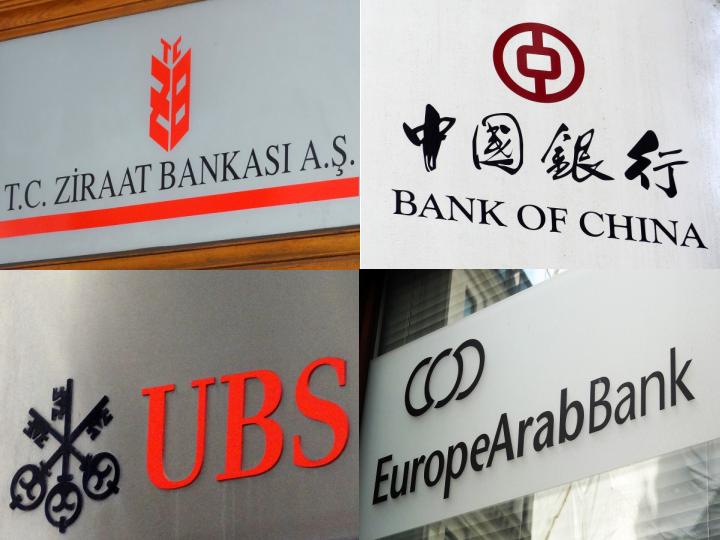 In response, the Basel Committee has published a revised set of liquidity requirements. The new liquidity coverage ratio, instead of being introduced in full in 2015, will be phased in over four years from 2015 to 2019. Also the definition of liquid assets has been significantly expanded to include highly rated equities, company bonds and mortgage-backed securities.
In response, the Basel Committee has published a revised set of liquidity requirements. The new liquidity coverage ratio, instead of being introduced in full in 2015, will be phased in over four years from 2015 to 2019. Also the definition of liquid assets has been significantly expanded to include highly rated equities, company bonds and mortgage-backed securities.
This loosening of the liquidity requirements has been well received by banks. But, as some of the commentators point out in the articles, it is some of these assets that proved to be wholly illiquid in 2007/8!
Articles
Banks Win 4-Year Delay as Basel Liquidity Rule Loosened BloombergJim Brunsden, Giles Broom & Ben Moshinsky (7/1/13)
Banks win victory over new Basel liquidity rules Independent, Ben Chu (7/1/13)
Banks win concessions and time on liquidity rules The Guardian, Dan Milmo (7/1/13)
Basel liquidity agreement boosts bank shares BBC News (7/1/13)
Banks agree minimum liquidity rules BBC News, Robert Peston (67/1/13)
The agreement
Group of Governors and Heads of Supervision endorses revised liquidity standard for banks BIS Press Release (6/1/13)
Summary description of the LCR BIS (6/1/13)
Basel III: The Liquidity Coverage Ratio and liquidity risk monitoring tools BIS (6/1/13)
 Introductory remarks from GHOS Chairman Mervyn King and the Basel Committee on Banking Supervision’s Chairman Stefan Ingves (Transcript) BIS (6/1/13)
Introductory remarks from GHOS Chairman Mervyn King and the Basel Committee on Banking Supervision’s Chairman Stefan Ingves (Transcript) BIS (6/1/13)
Questions
- What is meant by ‘liquid assets’?
- How does the liquidity of assets depend on the state of the economy?
- What is the relationship between the liquidity ratio and the money multiplier?
- Does the size of the money multiplier depend solely on the liquidity ratio that banks are required to hold?
- Distinguish between capital adequacy and liquidity.
- What has been the effect of quantitative easing on banks’ liquidity ratios?
 In a previous blog, Anyone got a crystal ball?, we reported on the Bank of England’s and other agencies’ difficulty in making forecasts. As the Governor, Mervyn King, said, “There is just enormous uncertainty out there.”
In a previous blog, Anyone got a crystal ball?, we reported on the Bank of England’s and other agencies’ difficulty in making forecasts. As the Governor, Mervyn King, said, “There is just enormous uncertainty out there.”
The Bank of England has just published its November Inflation Report. This quarterly publication gives forecasts of inflation, GDP and other indicators. It is clear that forecasting hasn’t become any easier. In his opening remarks, Dr. King says:
Continuing the recent zig-zag pattern, output growth is likely to fall back sharply in Q4 as the boost from the Olympics in the summer is reversed – indeed output may shrink a little this quarter. It is difficult to discern the underlying picture. It is probably neither as good as the zigs suggest nor as bad as the zags imply.
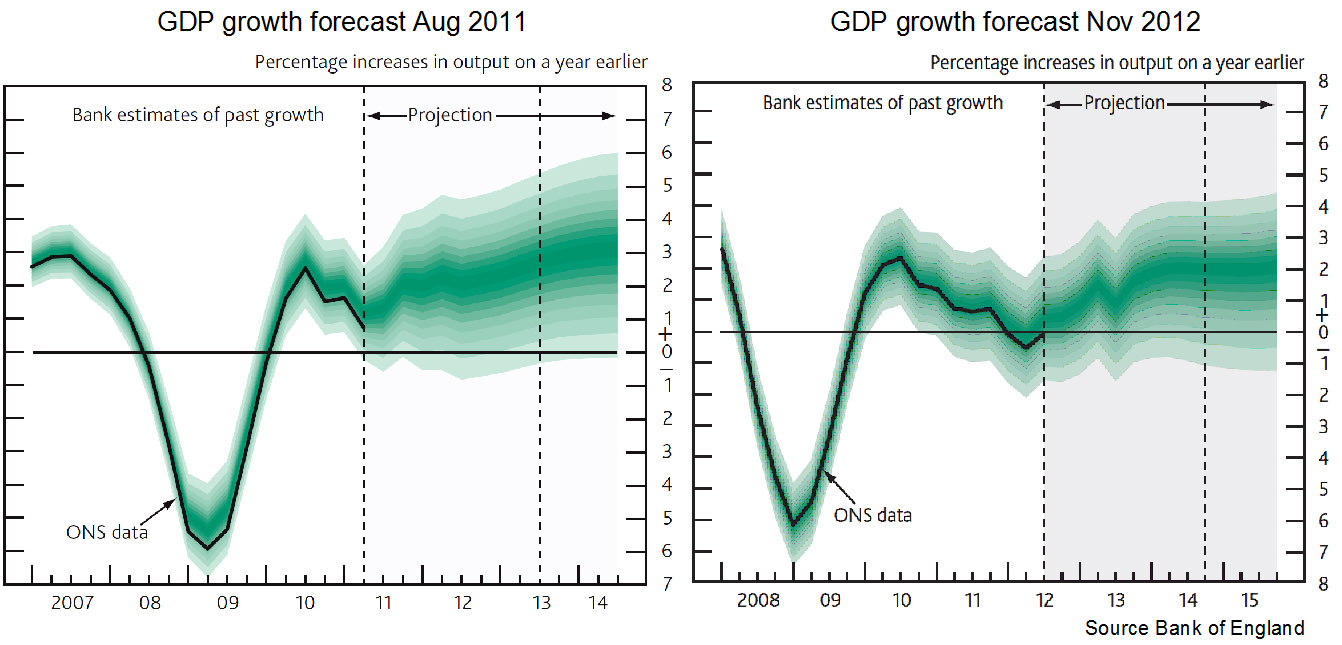
The Inflation Report looks at the various factors affecting aggregate demand, inflation, unemployment and aggregate supply. It is quite clear on reading the report why there is so much uncertainty.

A salutary lesson is to look back at previous forecasts and see just how wrong they have been. The chart above shows the forecasts for GDP made in the Inflation Reports of Nov 2012 and Aug 2011. You can see that they are significantly different and yet just 15 months apart. You might also like to compare the forecasts made a year ago (or even two!) about 2012 with the actual situation today. A good source for this is the Treasury’s Forecasts for the UK economy. This collates the forecasts from a range of independent forecasters.
The inaccuracy of forecasting is an inevitable consequence of a highly interdependent world economy that is subject to a range of economic shocks and where confidence (or lack of it) is a major determinant of aggregate demand. But when firms, governments, individuals and central banks have to make plans, it is still necessary to project into the future and try to forecast as accurately as possible – even though it might mean keeping your fingers firmly crossed.
Articles
Bank of England downgrades growth forecast for 2013 Daily Record (14/11/12)
A gloomy picture from the Old Lady Financial Times (14/11/12)
Will Britain’s post-recession economy be resurgent, stagnant or greener? The Guardian, Larry Elliott (11/11/12)
Economics must heed political risk Financial Times, Sebastian Mallaby (6/11/12)
European Commission autumn forecast: overoptimistic and in denial Social Europe Journal, Andrew Watt (7/11/12)
Bank of England gets long to-do list for overhaul Reuters, Sven Egenter (2/11/12)
Data
Inflation Report, November 2012 Bank of England
Index of economic forecasts European Commission DGECFIN
Economic Outlook Annex Tables OECD
World Economic Outlook Reports IMF
Forecasts for the UK economy HM Treasury
Questions
- What was being forecast for economic growth and inflation for 2012 (a) one year ago; (b) two years ago?
- What are the main reasons for the inaccuracy of forecasts?
- How might forecasting be made more reliable?
- If sentiment is a key determinant of economic activity, how might politicians increase the confidence of firms and consumers? What are the political constraints on doing this?
- Explain the following statement from the Guardian article: “The problem … is that last decade’s tailwind has become this decade’s headwind.” Why is it difficult to forecast the strength of this ‘headwind’?
- How useful is it to use past trends as a guide to the future course of the economy?
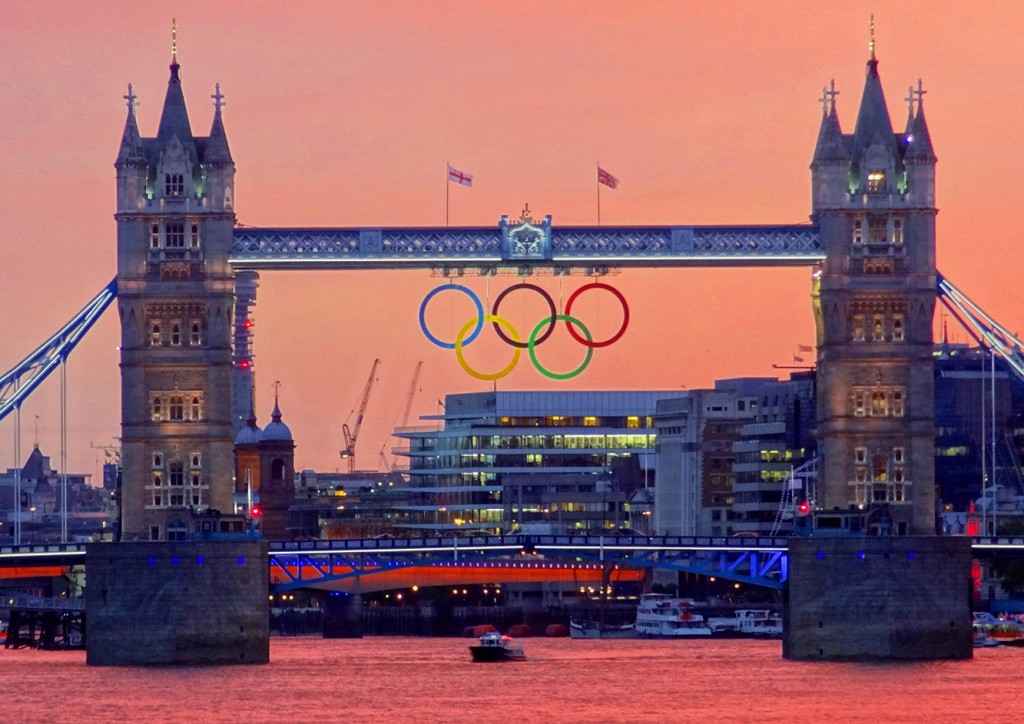 The story of the UK economy over the past few years has been one of bad news and worse news. With a double-dip recession having kept confidence low in the UK, positive news for the economy was seemingly a distant hope of government ministers. However, official statistics show that that in the 3 months from July to September, the UK economy emerged from recession, with growth of 1.0%.
The story of the UK economy over the past few years has been one of bad news and worse news. With a double-dip recession having kept confidence low in the UK, positive news for the economy was seemingly a distant hope of government ministers. However, official statistics show that that in the 3 months from July to September, the UK economy emerged from recession, with growth of 1.0%.
This positive GDP figure (click here for a PowerPoint of the chart below) was undoubtedly helped by the London Olympics over the summer, which may have added as much as 0.2 percentage points to GDP, according to the ONS. Millions arriving in London and other venues, spending money on countless things. Yet, other factors have also contributed to this welcome growth. Stephanie Flanders said:
The positive ‘surprise’ in these figures is largely to be found in the service sector, which is estimated to have growth by 1.3% in the third quarter, after shrinking by 0.1% in the three months before.
Further to this, in Stephanie Flanders’ ‘Stephanomics’, she says that ‘it confirms that the last three months of this latest recession were brought to you by the Queen. Or at least, the extra Bank Holiday to celebrate her Jubilee.’ The Bank of England suggests that the Jubilee took 0.5 percentage points from official GDP statistics. So, the news so far is positive, but the economy is far from being back to its pre-recession size.
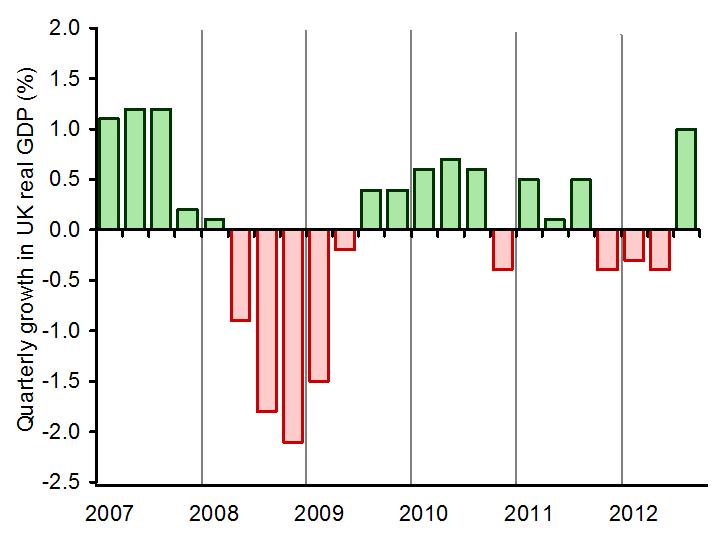
The 2008-2009 recession knocked 6.4% off the UK economy. Since then, the total growth (over the past 4 years) has reached only half of that – 3.2% and that includes the 1% figure just published. Thus, while we may be on ‘the right track’, there is still a long way to go. Economists differ in their interpretations of what this means for the overall recovery: some say that this is a sign of what’s to come; others argue that this recovery has been driven by one-off factors.
What is certain is that government policy over the next few months will be crucial in keeping the economy on the right growth path. The following articles consider the implications of this new economic data.
A special recovery BBC News, Stephanomics, Stephanie Flanders (25/10/12)
UK GDP rises 1pc: economist reaction The Telegraph (25/10/12)
Nick Clegg warns economic recovery will be ‘fitful’ The Guardian, Daniel Boffey (28/10/12)
GDP figures set to show UK economy has exited double-dip recession The Telegraph, Philip Aldrick, Emma Rowley and Jessica Winch (25/10/12)
UK economy returns to growth with help from Olympics BBC News (25/10/12)
U.K. posts quarterly gain in GDP, lifted by Olympics Wall Street Journal, Cassel-Bryan Low (25/10/12)
GDP figures show UK emerging from recession: full reaction The Guardian (25/10/12)
UK growth signals move out of recession Financial Times, Sarah O’Connor and George Parker (25/10/12)
Questions
- How do we define a recession?
- How is GDP calculated and what does it measure?
- Which factors have contributed towards lower GDP data towards the beginning of this year?
- Which factors have helped boost GDP in the 3 months from July to September?
- Why is there disagreement about the likelihood of positive GDP figures continuing throughout the rest of the year?
- Prior to the official release of the GDP figures, David Cameron hinted at positive news. Given that the market is so sensitive, what effect might this suggestion have had?
- Given this positive figure, what implications does this have for the government’s quantitative easing programme?
- If we translate this latest growth data onto an AD/AS diagram, how would you show what has recently happened?
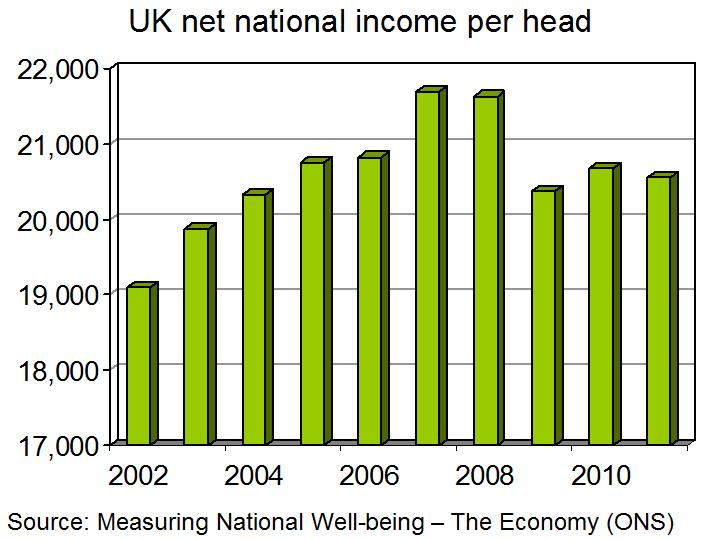 Although every recession is different (for example in terms of length and magnitude), they do tend to have a few things in common. The focus of this blog is on consumer income and how it is affected in the aftermath of (or even during) a recession. According to data from the ONS, real national income per head has fallen by more than 13% since the start of 2008.
Although every recession is different (for example in terms of length and magnitude), they do tend to have a few things in common. The focus of this blog is on consumer income and how it is affected in the aftermath of (or even during) a recession. According to data from the ONS, real national income per head has fallen by more than 13% since the start of 2008.
This latest data from the Office of National Statistics shows that in the aftermath of the 2008 recession, UK incomes have fallen by much more than they did in the 2 previous recessions experienced in the UK (click here for a PowerPoint of the chart). We would normally expect consumer incomes to fall during and possibly directly after a recession, as national output falls and confidence tends to be and remain low. However, the crucial thing to consider with falling consumer incomes is how it affects purchasing power. If my income is cut by 50%, but prices fall by 80%, then I’m actually better off in terms of my purchasing power.

The data from the ONS is all about purchasing power and shows how UK consumer incomes have fallen at the same time as inflation having been relatively high. It is the combination of these two variables that has been ‘eating into the value of the cash that people were earning’. Comparing the incomes in the four years after the 2008 recession with similar periods following the early 1980s and 1990s recession, the ONS has shown that this most recent recession had a much larger effect on consumer well-being. Part of this may be due to the rapid growth in incomes prior to the start of the credit crunch.
It’s not just the working population that has seen their incomes fall since 2008 – the retired population has also seen a decline in income and according to a report from the Institute for Fiscal Studies, it is the wealthiest portion of older households that have taken the largest hit since 2007. According to the IFS, the average person over 50 has experienced a fall in their gross wealth of about 10%, or close to £60,000. Of course for these older households, the concern is whether they will be able to make up this lost wealth before they retire. The concern for everyone is how long until incomes and purchasing power increase back to pre-crisis levels. The following articles consider this latest data on economic well-being and the impact the recession has had.
UK wellbeing still below financial crisis levels Guardian, Larry Elliott and Randeep Ramesh (23/10/12)
National income per head ‘down 13% in four years’ BBC Newsd (23/10/12)
Financial crisis hits UK retirement income Financial Times, Norma Cohen (23/10/12)
Over 50s ‘left £160,000 out of pocket by the financial crisis’ The Telegraph, James Kirkup (23/10/12)
Those near retirement in UK hit hard by crisis Wall Street Journal, Paul Hannon (23/10/12)
Living standards down 13pc since start of recession The Telegraph (23/10/12)
Questions
- Why is net national income per head said to be the best measure of economic well-being?
- Why is it so important to take into account inflation when measuring wellbeing?
- What explanation can be given for the larger fall in consumer incomes following the 2008 recession relative to the previous 2 recessions?
- According to data from the IFS, the richest portion of older households have suffered the most in terms of lost wealth. Why is this the case?
- What is meant by purchasing power?
- GDP has fallen by about 7%, whereas national income per head, taking inflation into account is down by over 13%. What is the explanation for these 2 different figures?
- How can recessions differ from each other? Think about the length, the magnitude of each.
- Is GDP a good measure of economic well-being? Are there any other ways we can measure it?
 According to the first estimate by the Office for National Statistics, the UK economy shrank by 0.3% in the final three months of 2012. This means that over the whole year growth was flat.
According to the first estimate by the Office for National Statistics, the UK economy shrank by 0.3% in the final three months of 2012. This means that over the whole year growth was flat. Not surprisingly politicians have interpreted the statistics very differently, as have economists. The government, while recognising that the UK faces a ‘very difficult economic situation’, argues that now is not the time to change course and that by continuing with policies to reduce the deficit the economy will be placed on a firmer footing for sustained long-term growth
Not surprisingly politicians have interpreted the statistics very differently, as have economists. The government, while recognising that the UK faces a ‘very difficult economic situation’, argues that now is not the time to change course and that by continuing with policies to reduce the deficit the economy will be placed on a firmer footing for sustained long-term growth Video Summary: Gross Domestic Product Preliminary Estimate, Q4 2012 Media Briefing (Click here for the following Q&A) ONS (25/1/13)
Video Summary: Gross Domestic Product Preliminary Estimate, Q4 2012 Media Briefing (Click here for the following Q&A) ONS (25/1/13) Triple dip on the menu? Channel 4 News, Siobhan Kennedy and Faisal Islam (25/1/13)
Triple dip on the menu? Channel 4 News, Siobhan Kennedy and Faisal Islam (25/1/13) Getting and spending – the key to recovery Channel 4 News, Cathy Newman (25/1/13)
Getting and spending – the key to recovery Channel 4 News, Cathy Newman (25/1/13) UK economy shrinks by 0.3% in the last three months of 2012 BBC News, Hugh Pym (25/1/13)
UK economy shrinks by 0.3% in the last three months of 2012 BBC News, Hugh Pym (25/1/13) Danny Alexander on GDP figures and economic plans BBC Daily Politics (25/1/13)
Danny Alexander on GDP figures and economic plans BBC Daily Politics (25/1/13) Osborne defends government’s deficit reduction plan BBC News (25/1/13)
Osborne defends government’s deficit reduction plan BBC News (25/1/13) Ed Balls: UK economy urgently needs a ‘Plan B’ BBC News (25/1/13)
Ed Balls: UK economy urgently needs a ‘Plan B’ BBC News (25/1/13) UK heads for triple dip as GDP contracts 0.3pc The Telegraph, Philip Aldrick (25/1/13)
UK heads for triple dip as GDP contracts 0.3pc The Telegraph, Philip Aldrick (25/1/13) Economist: Government may need to rethink its fiscal policy The Telegraph, Jim O’Neill (25/1/13)
Economist: Government may need to rethink its fiscal policy The Telegraph, Jim O’Neill (25/1/13) Has austerity really been tried in Britain? BBC Today Programme, Jonathan Portes and Andrew Lilico (29/1/13)
Has austerity really been tried in Britain? BBC Today Programme, Jonathan Portes and Andrew Lilico (29/1/13) Video Summary: Gross Domestic Product Preliminary Estimate, Q4 2012 ONS (25/1/13)
Video Summary: Gross Domestic Product Preliminary Estimate, Q4 2012 ONS (25/1/13)







